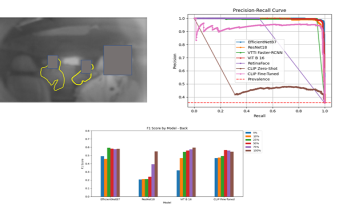
Naturalistic driving studies consist of drivers using their personal vehicles and provide valuable real-world data, but privacy issues must be handled very carefully. Drivers sign a consent form when they elect to participate, but passengers do not for a variety of practical reasons. However, their privacy must still be protected. One large study includes a blurred image of the entire cabin which allows reviewers to find passengers in the vehicle; this protects the privacy but still allows a means of answering questions regarding the impact of passengers on driver behavior. A method for automatically counting the passengers would have scientific value for transportation researchers. We investigated different image analysis methods for automatically locating and counting the non-drivers including simple face detection and fine-tuned methods for image classification and a published object detection method. We also compared the image classification using convolutional neural network and vision transformer backbones. Our studies show the image classification method appears to work the best in terms of absolute performance, although we note the closed nature of our dataset and nature of the imagery makes the application somewhat niche and object detection methods also have advantages. We perform some analysis to support our conclusion.
Ryan Peruski, Deniz Aykac, Lauren Torkelson, Thomas Karnowski, "Exploring Object Detection and Image Classification Tasks for Niche Use Case in Naturalistic Driving Studies" in Electronic Imaging, 2024, pp 112-1 - 112-6, https://doi.org/10.2352/EI.2024.36.17.AVM-112
 Find this author on Google Scholar
Find this author on Google Scholar Find this author on PubMed
Find this author on PubMed